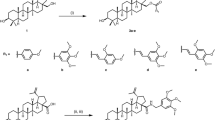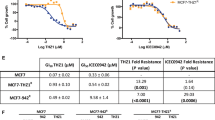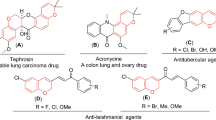Abstract
The potent kinase inhibitor staurosporine and its protein kinase C (PKC)-selective analogue CGP 41251 are known to sensitise cells with the multidrug resistance (MDR) phenotype mediated by P-glycoprotein (P-gp) to cytotoxic agents. Here four PKC-selective staurosporine cogeners, CGP 41251, UCN-01, RO 31 8220 and GF 109203X, were compared with staurosporine in terms of their MDR-reversing properties and their susceptibility towards P-gp-mediated drug efflux from MCF-7/Adr cells. Staurosporine was the most potent and the bisindolylmaleimides RO 31 8220 and GF 109203X the least potent cytostatic agents. When compared with MCF-7 wild-type cells, MCF-7/Adr cells were resistant towards the growth-arresting properties of RO 31 8220 and UCN-01, with resistance ratios of 12.6 and 7.0 respectively. This resistance could be substantially reduced by inclusion of the P-gp inhibitor reserpine. The ratios for GF 109203X, staurosporine and CGP 41251 were 1.2, 2.0 and 2.9 respectively, and they were hardly affected by reserpine. These results suggest that RO 31 8220 and UCN-01 are avidly transported by P-gp but that the other compounds are not. Staurosporine and CGP 41251 at 10 and 20 nM, respectively, decreased efflux of the P-gp probe rhodamine 123 (R123) from MCF-7/Adr cells, whereas RO 31 8220 and GF 109203X at 640 nM were inactive. CGP 41251 was the most effective and GF 109203X the least effective inhibitor of equilibrium binding of [3H]vinblastine to its specific binding sites, probably P-gp, in MCF-7/Adr cells. Overall, the results imply that for this class of compound the structural properties that determine susceptibility towards P-gp-mediated substrate transport are complex. Comparison with ability to inhibit PKC suggests that the kinase inhibitors affect P-gp directly and not via inhibition of PKC. Among these compounds CGP 41251 was a very potent MDR-reversing agent with high affinity for P-gp and least affected by P-gp-mediated resistance, rendering it an attractive drug candidate for clinical development.
This is a preview of subscription content, access via your institution
Access options
Subscribe to this journal
Receive 24 print issues and online access
$259.00 per year
only $10.79 per issue
Buy this article
- Purchase on Springer Link
- Instant access to full article PDF
Prices may be subject to local taxes which are calculated during checkout
Similar content being viewed by others
Author information
Authors and Affiliations
Rights and permissions
About this article
Cite this article
Budworth, J., Davies, R., Malkhandi, J. et al. Comparison of staurosporine and four analogues: their effects on growth, rhodamine 123 retention and binding to P-glycoprotein in multidrug-resistant MCF-7/Adr cells. Br J Cancer 73, 1063–1068 (1996). https://doi.org/10.1038/bjc.1996.205
Issue Date:
DOI: https://doi.org/10.1038/bjc.1996.205
This article is cited by
-
Targeting the protein kinase C family: are we there yet?
Nature Reviews Cancer (2007)
-
Modulation of MDR-1 gene in human breast cancer cells by sodium butyrate and DMSO
Chinese Journal of Cancer Research (2001)



